Passage Migrants Birding Tour - Sep'19
- With JungleHike Tours (Avinash Bhagat)
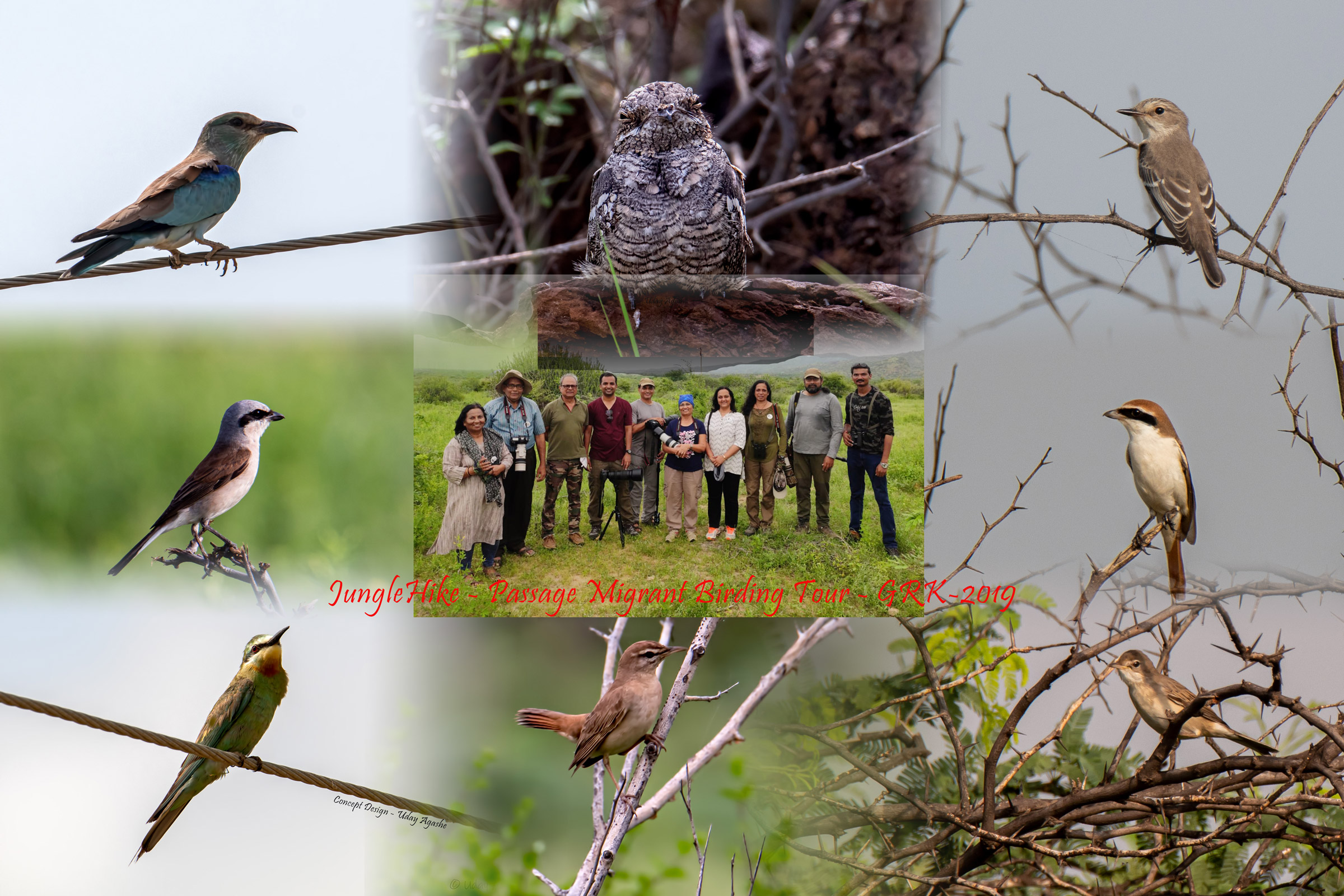
Group with the Target Birds
Highlights:
- Covered all 8 Passage Migrants Targetted
- Bonus sightings of the Saw-scaled Viper
In the last couple of years, I have been on various birding trips and also know that migration is the best season for birding. But this was little different… passage migrants (PM)!
Avinash announced it in monsoon, we (myself & Deepa) were little intrigued about it and decided to go ahead. It turned out to be a fantastic experience. Another JungleHike special.
But before getting into the trip blog....
What are Passage Migrants?
These are some of the birds migrating mainly from Europe region and their final destination is Africa. But they cover this journey with a stopover in India (some reach the GRK region). They travel in batches (populations as it is called in birding) and these batches start arriving from late August. They typically stay in India for about 2 weeks, gain enough weight (fats) and then fly further south to Africa...
Source: Avinash Bhagat & internet
Most of them will be gone by Sep end (or early Oct). So this seemed to be the only time-frame for observing them in India. And since they come in small numbers over the vastly spread area, sighting them becomes that much more difficult.
Avinash created whatsapp group few days before the trip and that’s when the preparations started. He suggested carrying the Macro lens along (that turned out to be very very useful tip).
We all Boarded the train from Dadar (except Arvind ji, who joined us from Vadodara), all 10 participants were on the same train. We were to reach Bhuj by about 7am, train was some 10-15 minutes delayed but by the time we opened our eyes in the morning, Avinash had already messaged everyone: “Birding starts right after coming out of station and we will be going to the hotel only by lunch time”.
No time for freshening-up, breakfast, nothing (or get it done in the train itself)! But no one complained, (except may be a few raised-eyebrows). That’s the beauty of such birding trips… completely focused and absolutely clear priorities!!
Day 1 (12-Sep-19)
Outside at Bhuj, Bharat bhai (Bharat Kapdi) was already waiting with his vehicles. We split ourselves into 2 jeeps and started our road journey. Bharat bhai runs the Epicentre Home-Stay at Lodai village in Bhuj and he is the resident expert there. Besides that, he is an exceptional host too!
Within 20 minutes of our journey, the vehicle ahead had stopped and Bharat-bhai was already down. Without any question, we also got down and could see our first migrant species (not PM), the common cuckoo or the Eurasian cuckoo. The cuckoo was at some distance but on a nice perch. After few quick snaps we tried to go nearer but it immediately got alerted and flew away. We all ran behind it for some time, got a few decent clicks in the process and then came back to the vehicles as instructed by Avinash. Besides our 2 vehicles, we had another vehicle of enthusiastic birders from Gujarat who were also staying at Bharat’s home-stay.

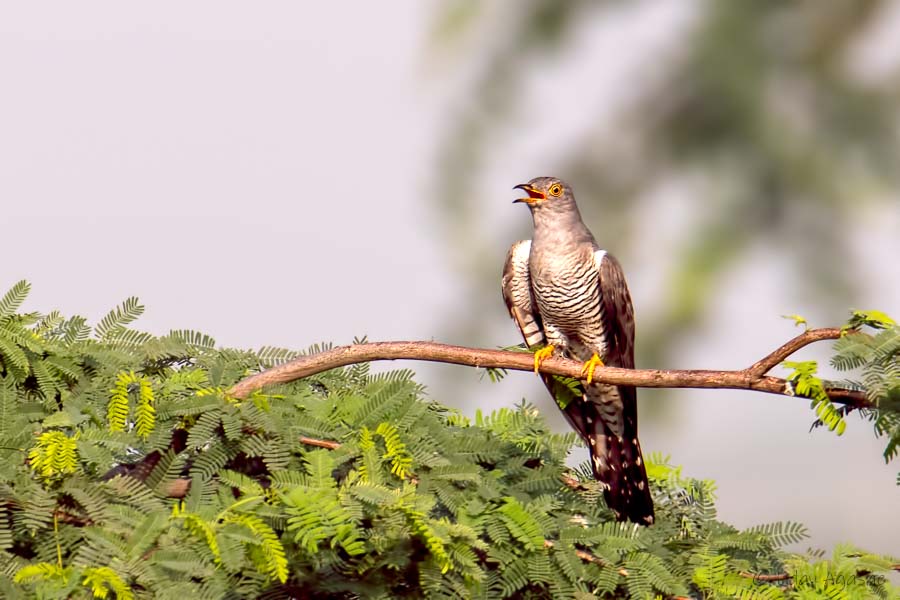
Further 5 minutes and we got down again. This time we were on foot for more than half hour and were treated with multiple passage migrants (as well as some resident birds). First PM on scene was the “red-tailed shrike”, it was quickly followed by 2 more (the common whitethroat & the spotted flycatcher). These birds kept on changing the perch and our entire troop followed suit. Without much of discussions we were following them as quietly as possible.
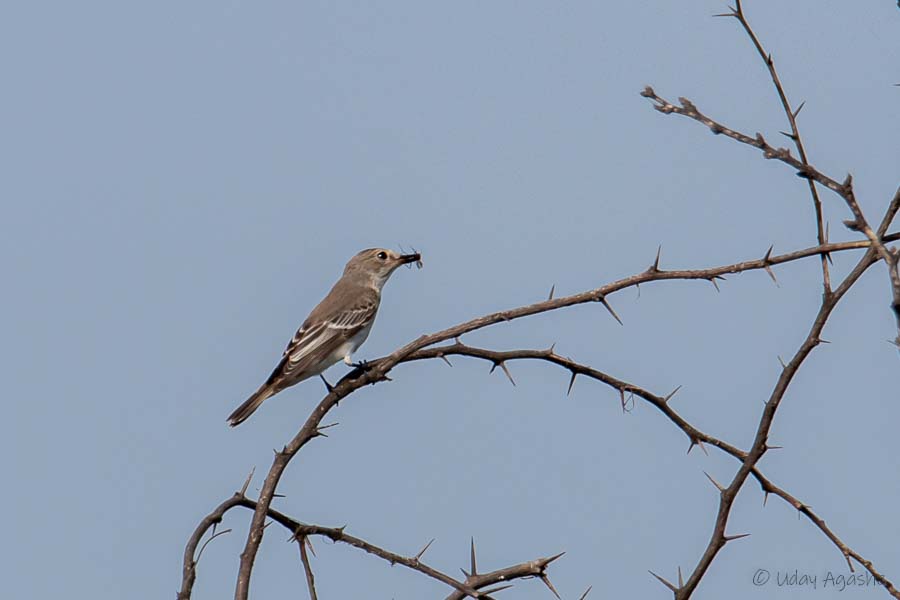
Spotted Flycatcher (PM)
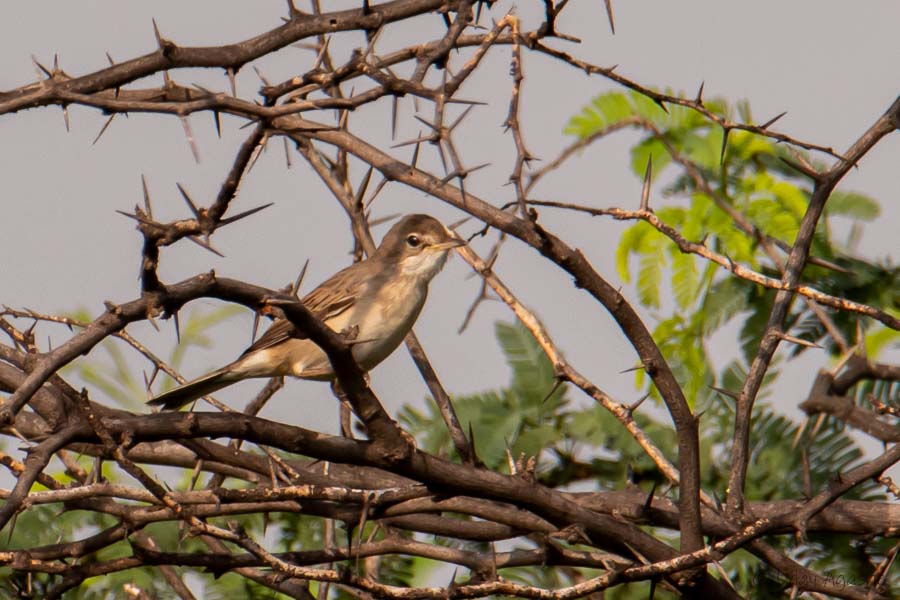
Common Whitethroat (PM)
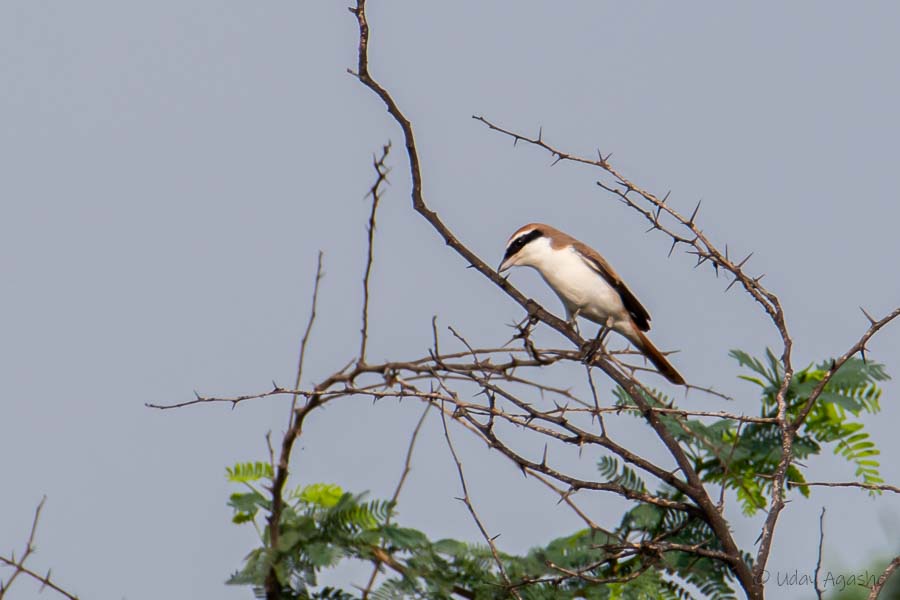
Red-tailed Shrike (PM)
Besides these European guests, we were also able to see the Eurasian Hoopoe with its fully-spread crest. There were “Indian Silverbill”, “red-vented” and “white-eared” bulbuls and the “doves” for company.
Thanks to Clara, came to know about some interesting facts about the Hoopoe. This species is commonly seen across India but apparently there is one sub-species that is migratory and the only distinction about it is the crest patch. The crest with only black patches at the tip, are residents whereas those with black and white tip are winter migrants (as seen in the picture)
We were seeing another common bird there, the “House Sparrow” that looked little different. Avinash was quick to help us with the right identification. He explained us the various races of sparrow species and told us that what we are seeing in front is the “Parkini” race of sparrow that migrates locally from the Kashmir region.

Sparrow (migrating from Kashmir)
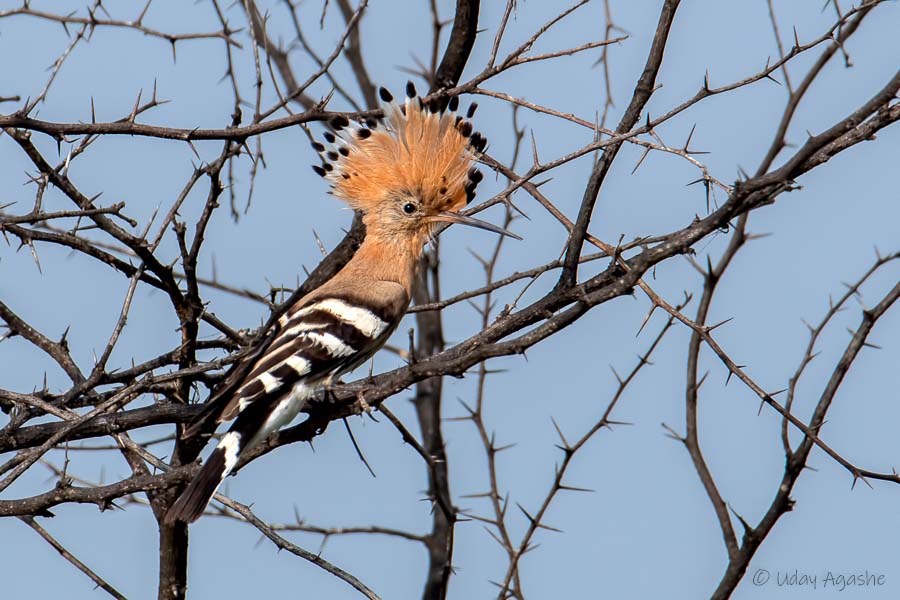
Eurasian Hoopoe
Reluctantly we decided to move from there and headed back towards our vehicles. We started again and stopped little further near a temple surrounded by farms on all sides. Not sure what was in store but the suspense didn’t last long… we were there for the forgotten task, “breakfast” (in all this birding frenzy, this was completely missed and it was already about 10am). Without leaving the cameras behind (no one wanted to miss any opportunity anywhere), we started enjoying the snacks and tea. All the while looking at the larks, sunbirds and the flycatcher flying around.
After the break, we again hit the road only to be stopped again for the European Roller (another PM). It was perched on the electric wire (photographers normally avoid such an artificial perch, but this was a passage migrant and we didn’t want to miss any). And while we were photographing the beauty, another PM gave us Darshan on a near-by wire. It was the “Blue-cheeked bee-eater” having its morning snacks. Around the same time, our attention was also grabbed by continuous calls of the Tailor-bird in breeding plumage (identified by the black-patch on its neck region – this information off-course is from Avinash/Clara)
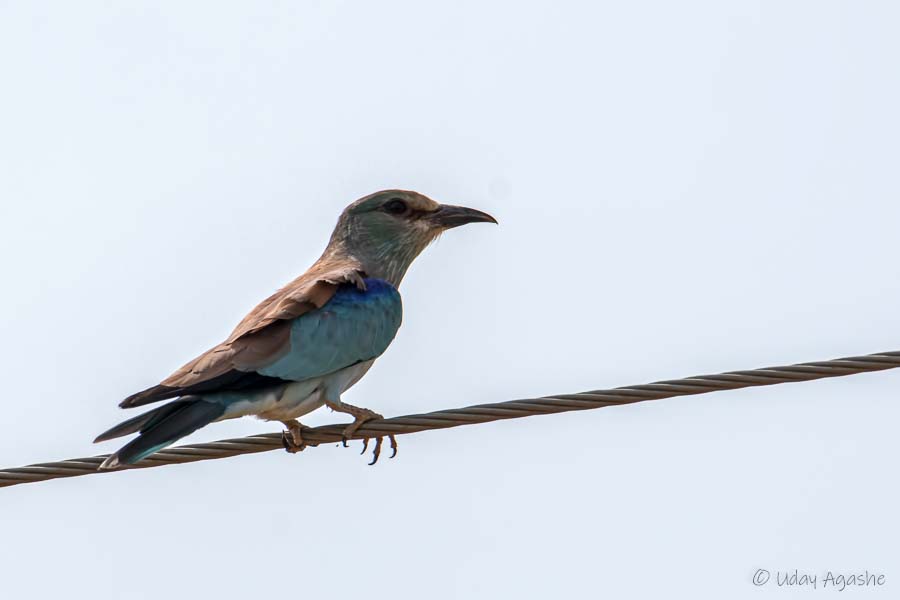
European Roller (PM)
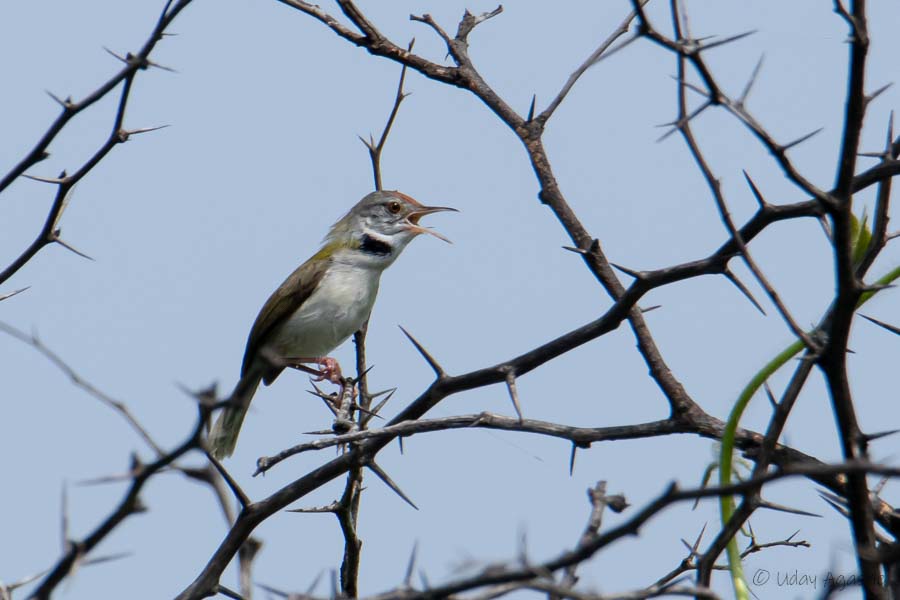
Tailorbird

Blue-cheeked Bee-eater (PM)
It was past 11am and the afternoon heat ensured that we closed our morning session (the birds would keep themselves in the shades and would therefore be difficult to locate).
Under Avinash and Clara’s guidance, we had already covered 5 PM species in the first session itself. They ensured to show us the birds as well as explained us the nuances of identifying them (though lot of it were still bouncers for some newcomers like me & Deepa).
Time for us to reach the home-stay located in the Lodai village. It was a nice cozy place, well maintained by Bharat and his team.
Room allocation was done and we got instructions to assemble at 1pm sharp for lunch. Our afternoon birding session was planned to start at3:30pm. So in-between those breaks, we could catch up on some sleep, some unpacking, photo-reviews, etc. etc.
Lunch (all meals actually) was local, vegetarian dishes but it was very tasty. All of us thoroughly enjoyed it along with the customary Chhas.
As planned, we began our evening session at 3:30 in right earnest. We went to another location in the evening, our target species for the session were the “Rufous-tailed Scrub-robin” and the “Red-backed Shrike” (2 more of the PMs). We got down at one possible spot and went walking thru the grassland there. This 20-minute walk was eventless as we could not see any special bird around.
We got into our vehicles and drove further down. This time we were able to sight some of the local species like the “Paddyfield Pipit” (normally seen in the fields, here it was perched on a tree branch), “Green bee-eaters” and the “Variable Wheatear”.

Green Bee-eaters
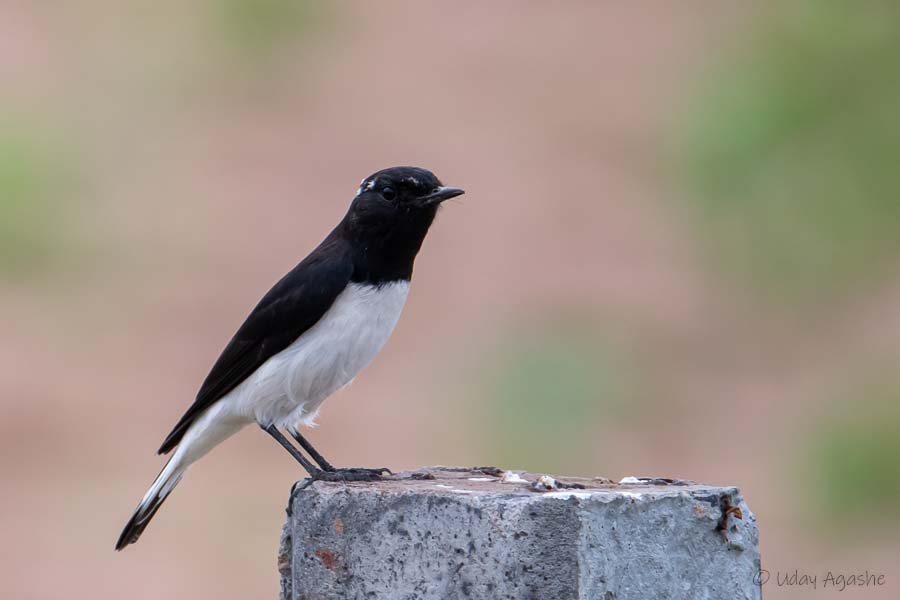
Variable Wheatear

Paddyfield Pipit
Another vehicle-hop and some more distance ahead, we came across our next star attraction. The “Red-backed Shrike”. Our guides had spotted it from long distance and instructed us to walk cautiously towards it. We decided to follow the discipline of everyone taking pictures from starting position and once done, all-of-us marched a few steps further to take more snaps… and continue this till we reach as near to the bird as possible. This way, everyone got equal opportunity and no heart-burns like
“I missed my shot because you guys moved so near”.
The shrike was generous and allowed us to come very close. After some snaps, it went away and came back with a big caterpillar catch. It then proceeded to devour it slowly in front of us, allowing us some more photos.
Red-backed Shrike (PM)
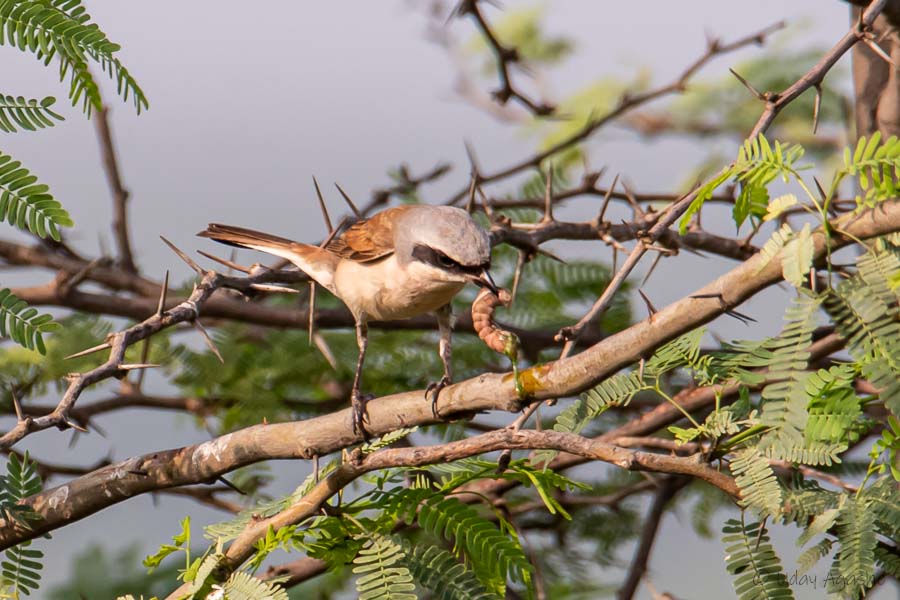
Red-backed Shrike with prey
We moved further ahead, it was past 5:30 and the light had started fading fast but then Avinash sighted the next PM attraction for us, the “Rufous-tailed Scrub Robin”. This bird apparently prefers open patches of grass and small bushes rather than tall tree canopies. But this time it was in thick bushes, with lot of crisscrossing branches obstructing our view. We followed its movements and kept moving accordingly, in the meanwhile grabbing whatever photos we could take. The search was finally abandoned after 6:30 and we decided to head back to our home-stay.

Rufous-tailed Scrub Robin (PM)
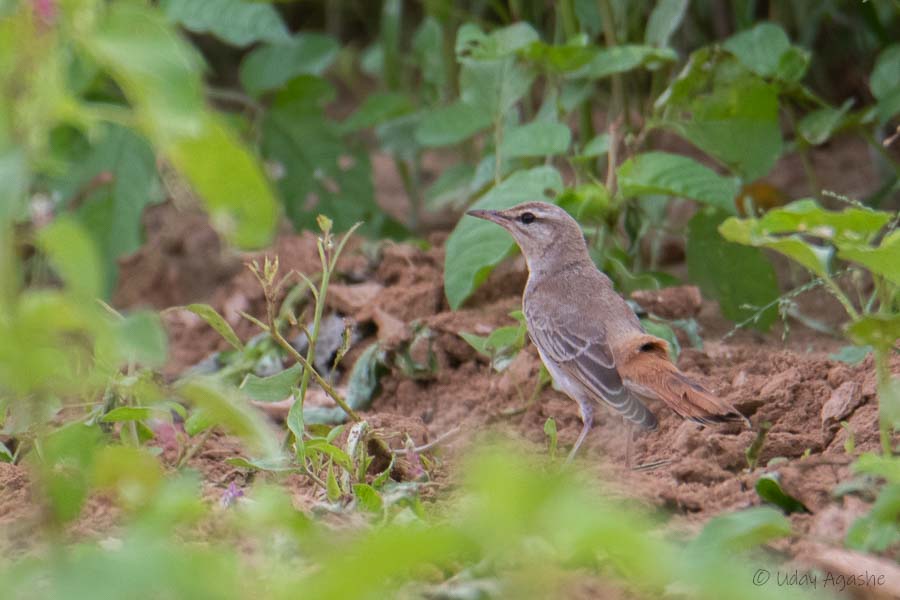
Dinner was served at 8:30 , after which we got down to the characteristic “JungleHike” meeting, to discuss the days findings. Avinash distributed the hardcopies of bird-list and we marked on the checklist as per our individual sightings.
First day of our fantastic tour got over by about 10pm and without any delay, I hit the bed (only after keeping an alarm for morning).
Day 2 (13-Sep-19)
Day started with the 6am tea and we were to start at 6:30 but one of the vehicles had some radiator issue that delayed us by about an hour. Today’s plan was to look for the European Nightjar in the nearby jungle area. On the way, we could see the Red Collared Dove near our home stay.
After reaching the spot by vehicle, we all got down and started the trail on foot. Bharat bhai took a different path as he wanted to search the Nightjar with as less disturbance as possible. The terrain was different from yesterday grasslands/fields but unfortunately the birding activity was limited there.
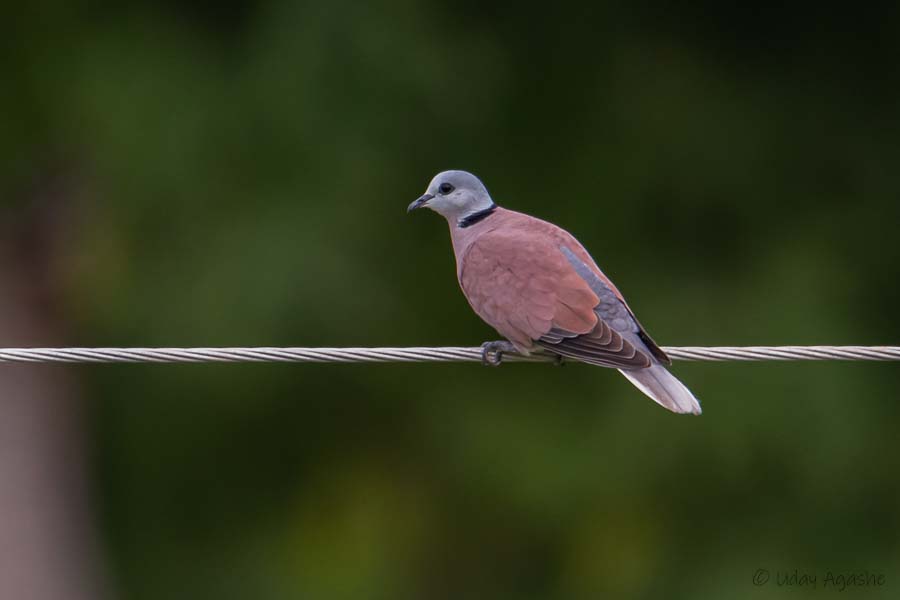
Red Collared Dove

Habitat of European Nightjar
The place had lot of small wild flowers but unfortunately, I had kept the Macro lens in the vehicle. Little later we were able to see the Marshall’s Iora pair. They were hiding behind the thick tree leaves but we managed to get some clicks anyway. We did see a few other birds and butterflies till the breakfast time. We could also seem some mushroom varieties there.
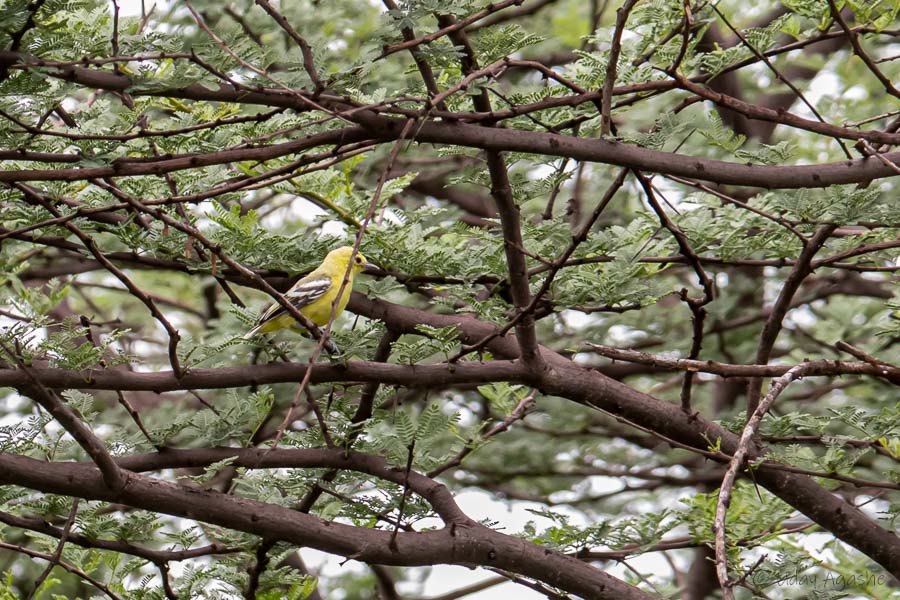
Marshall's Iora
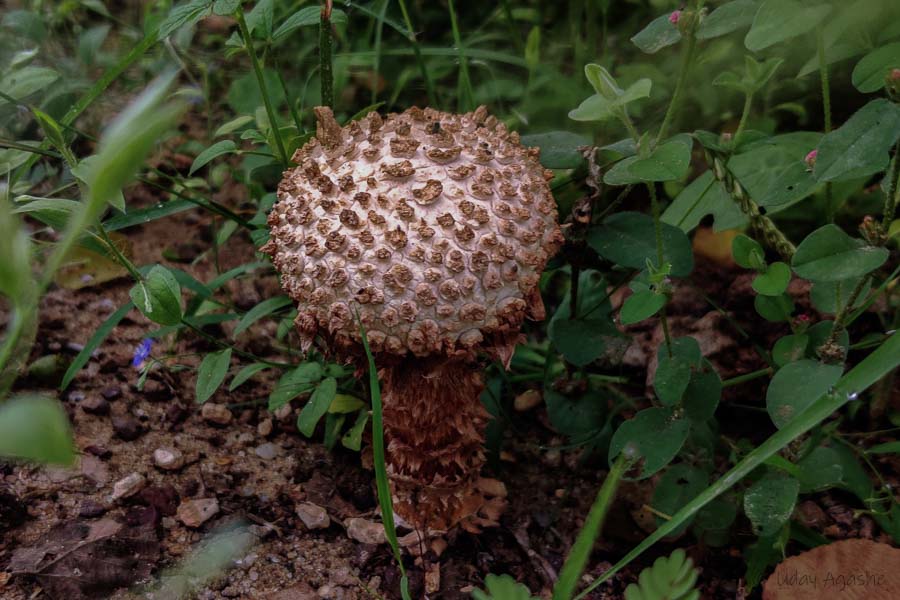
Wild Mushroom

Marshall's Iora
We went near our parked vehicles for the packed breakfast to see even Bharat bhai returned empty handed.
After lunch we resumed our search for the elusive Nightjar (apparently the other group that was staying at our homestay, had searched the place last evening and even they returned without seeing it). Some 500 mtrs in the trail, Bharat bhai quickly called our attention, he had spotted a “Saw-scaled Viper” in the thick bushes. Avinash identified it as “sochureki” sub species of the viper. This was golden opportunity, I had to get my Marco lens now. So I just ran back (frankly, the terrain was rocky and with gradients thus my run was limited at times to just fast walks… age is catching up!!!) to the vehicle and got the lens as quickly as possible. Managed to get some decent snaps of the reptile.

Saw-scaled Viper
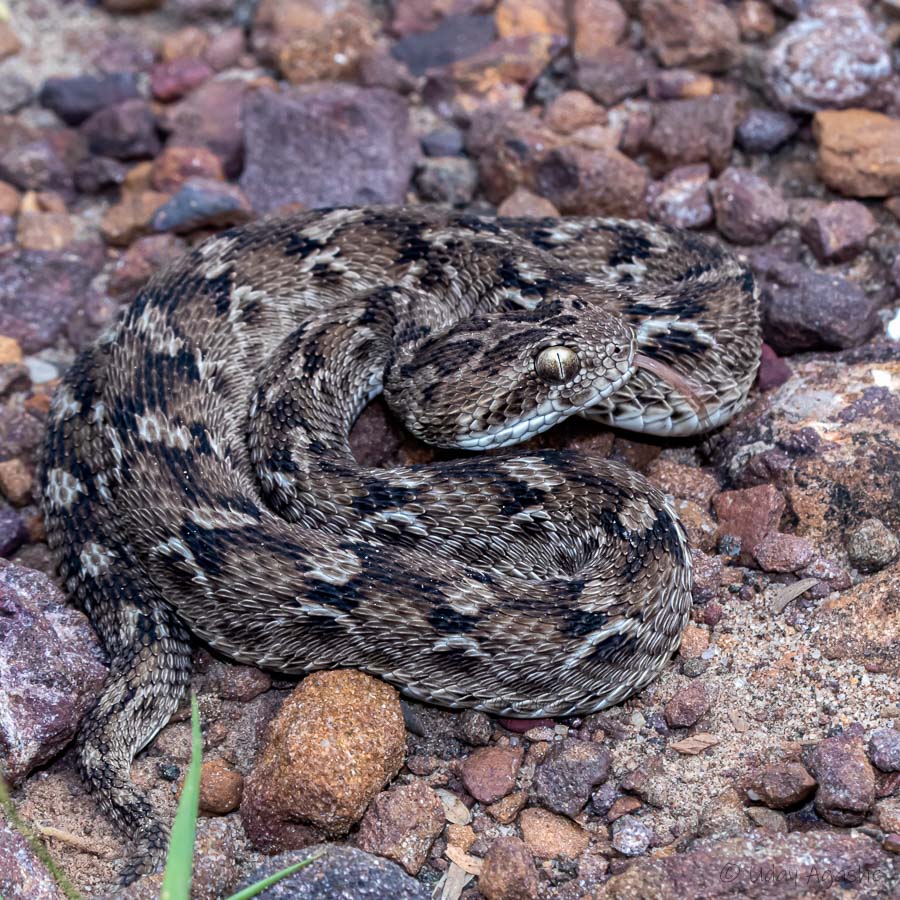
Saw-scaled Viper
It was getting hot and humid and with the increasing temperature, we were not likely to observe much of bird activity. Just when we were about to return back, there was some excitement. While rest of us were trying to find some shelter under trees, Avinash, Clara and Bharat-bhai were busy searching the Nightjar.
Suddenly we heard a flutter coming from the direction where Clara had gone and before we could even raise our cameras, the Nightjar flew over our heads, circled around and moved towards the small ravine. Technically we had seen the Nightjar, but all further searches that afternoon were completely futile and we had to return without any Nightjar photos.
Lunch was scheduled at 1pm and after that I decided to explore the home-stay location. They had put the bird-feeders throughout the compound and one such feeder was located right next to the lunch area. There seem to be a lot of activity there. A Sparrow mother was busy feeding seeds to her young ones. The doves, bulbuls and Baya-Weavers kept coming every few minutes for their share of the feed.
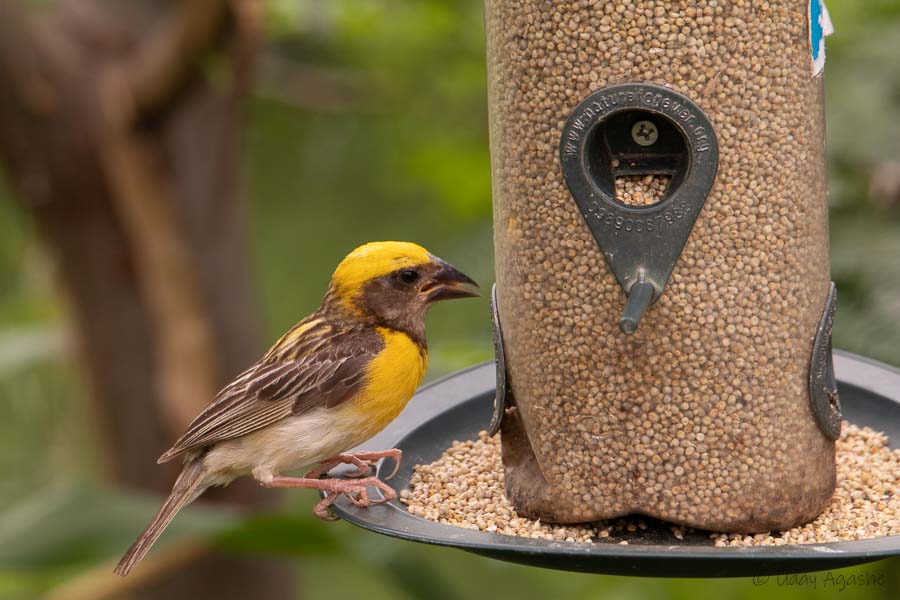
Baya Weaver-Male
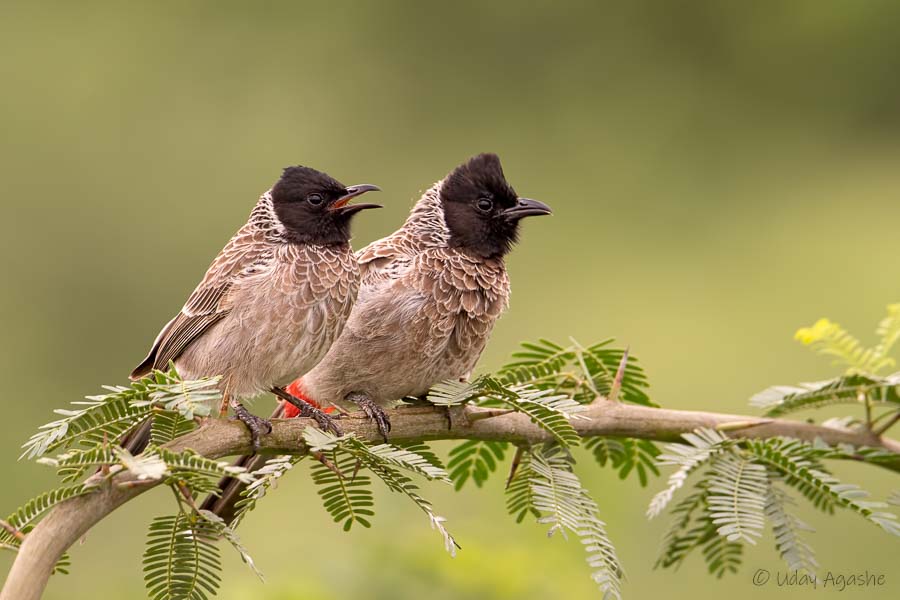
Red-vented Bulbuls

Sparrow feeding chick
Our afternoon trail was mainly for the streaked-weavers and so we started moving in that direction. On the way, we could see some local birds in the nearby fields. Prominent among them were “Pair of grey francolins”, the “red-naped or Black Ibis”, “Indian Coursers” and the desert wheatears.
We kept stopping at each of these points, sometimes we were able to get down from the vehicle for closer shots but otherwise we took pictures from inside our vehicle itself.
While on the way, we passed thru the spot where we found the scrub-robin yesterday. Naturally we decided to take a chance there. And there was some activity in the same bush. We quickly pointed our cameras in that direction and it turned out to be a “Eurasian Wryneck” looking at us. Another migrant (but not passage) who seem to have arrived early.
All these stoppages meant we could reach the weaver spot only by 5pm. This was a mix colony of Baya Weavers and Streaked weavers. The males were busy constructing their nests and were occasionally making lot of noise (maybe to call their partners to inspect the progress). The area was right next to a busy road and every passing vehicle kept honking at us (we were right on the roadside busy clicking pictures, and occasionally moving little carelessly in the process). Some passing school boys were heard taunting about our cameras and laughing-out to themselves.
The birds were in a frenzied activity and we just kept on clicking for next half hour. Since the birds were so close, no one wanted to move out from there. Avinash had another lure ready for us in the form of “Graceful Prinia”. And he warned us that light was fading fast, so we better move quickly to see it
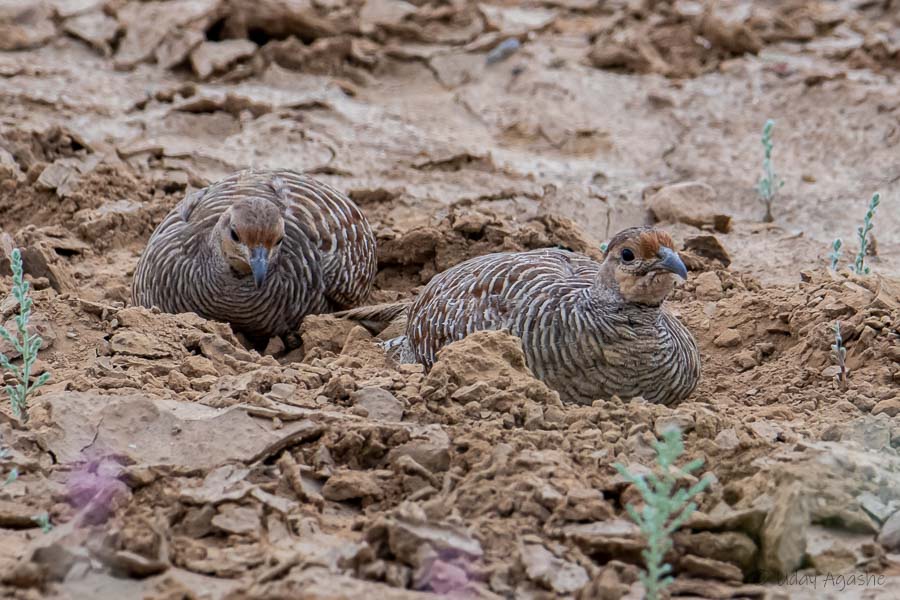
Grey Francolins

Red-naped Ibis
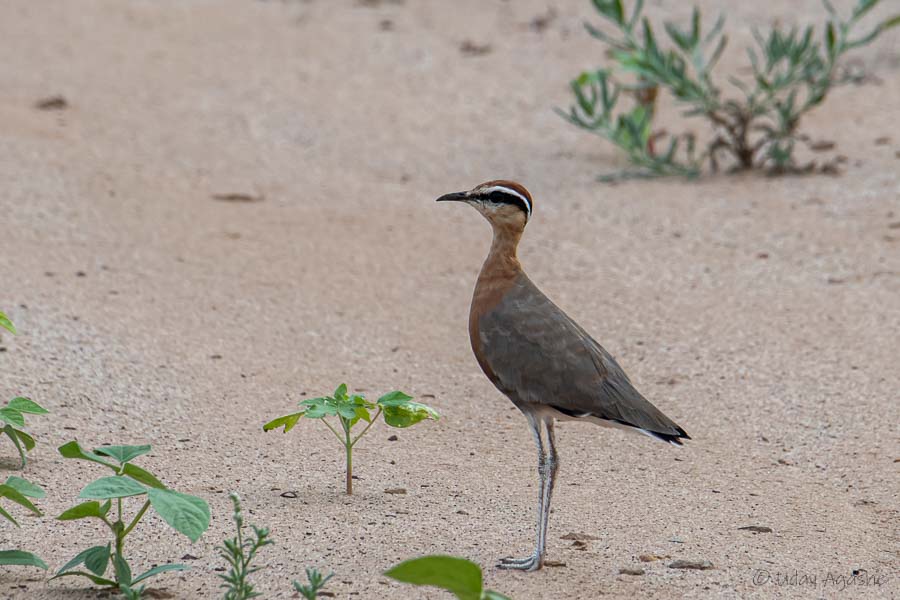
Indian Courser
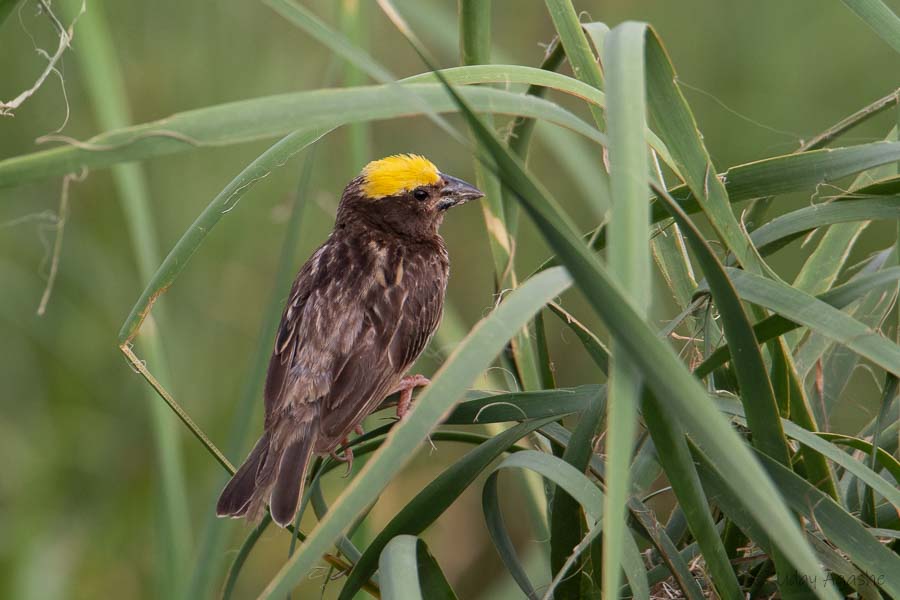
Streaked Weaver
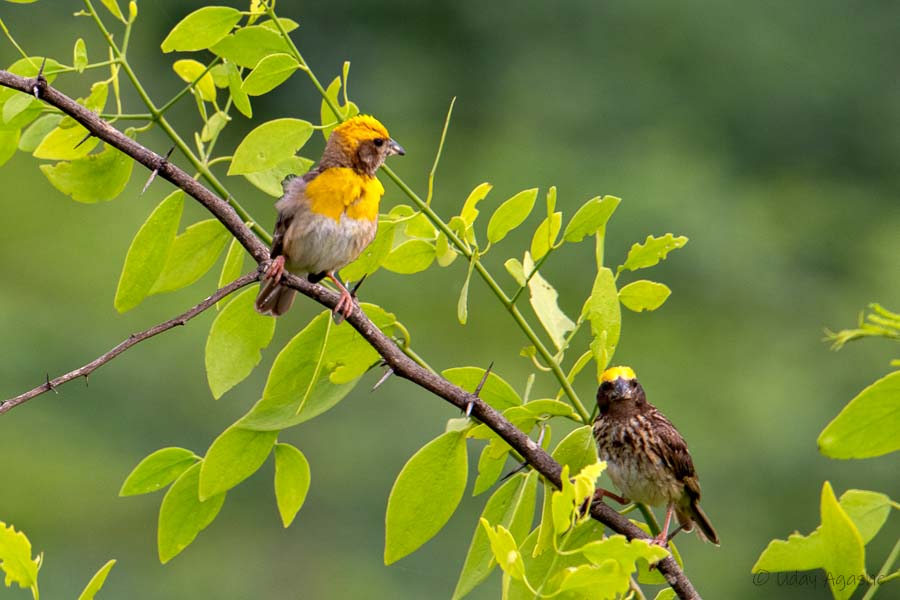
Baya & Streaked Weavers
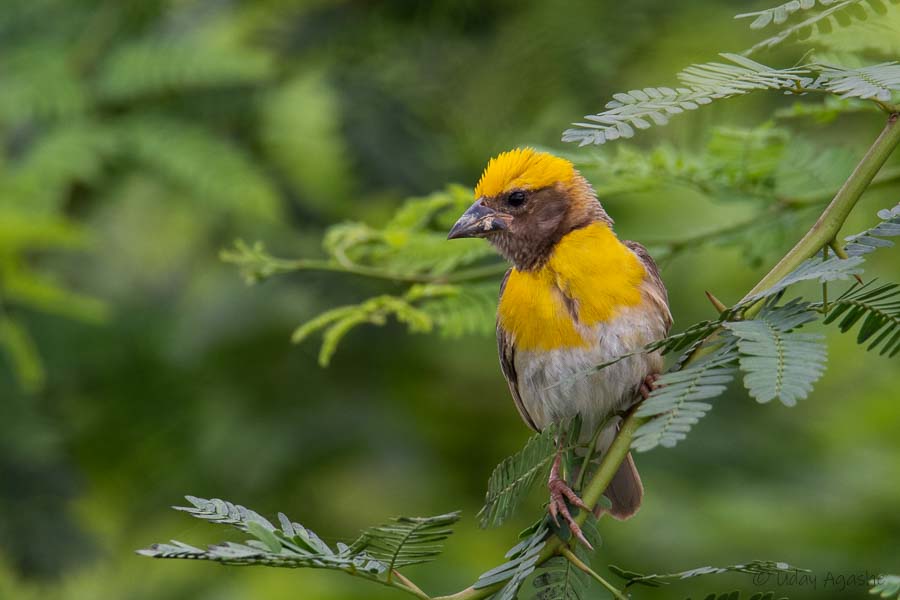
Baya Weaver

Streaked Weaver
From there we moved towards another area, there was a temple and small water body. We explored that area but there was no Prinia activity. All we could see was a pair of “Common Babblers”.
There was one other possible location for the Graceful Prinia. Avinash mentioned that it was also a historical site. We had carried our tea/biscuits along but no one wanted to have-it till we explored all the birding opportunities… Tea can wait!!
That place turned out to be a Sun Temple that is being maintained by the Archeological Society of India. The temple was affected by the Bhuj Earthquake and was subsequently restored to its current state. I managed to get some nice images of the temple along with the setting Sun. Avinash did explore the surroundings but we could not see the Prinia anywhere.

Sun Temple surroundings

Sun Temple with setting Sun
The light was really bad by now, so we relaxed a bit and had our tea break there. On the way back, Avinash broke the news that we will have a night-trail later that night. If nothing else, at least we would be able to see the Indian Nightjars. That definitely created some excitement for all of us.
We had decided to move out immediately after dinner (which was at usual 8:30pm). But before we got to it, Ajit kaka had spotted a scorpion right in front of our rooms. Good that he was alert while walking, else he would surely have stepped onto it. I immediately got the macro lens and swung into action. Managed to get some images of the scorpion including its deadly sting.
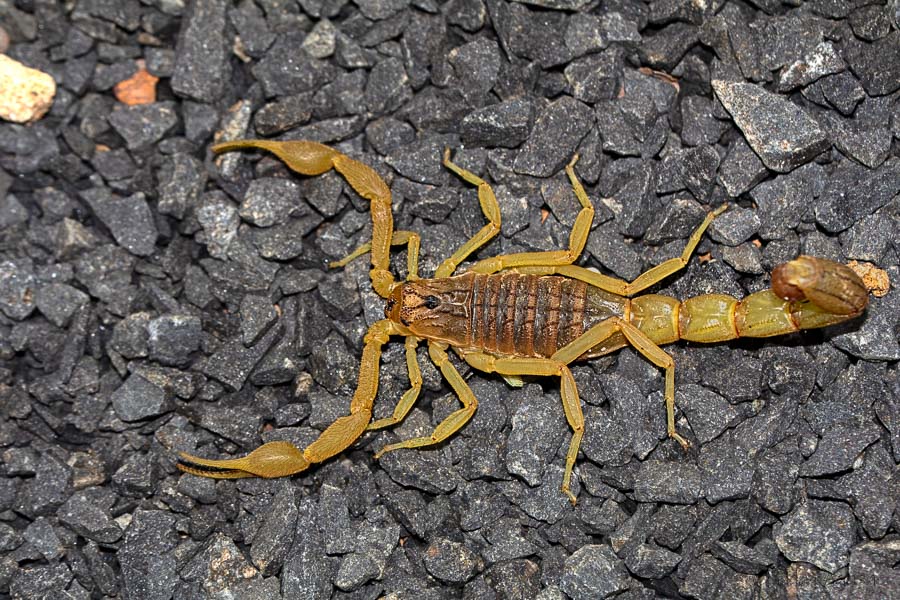
Scorpion
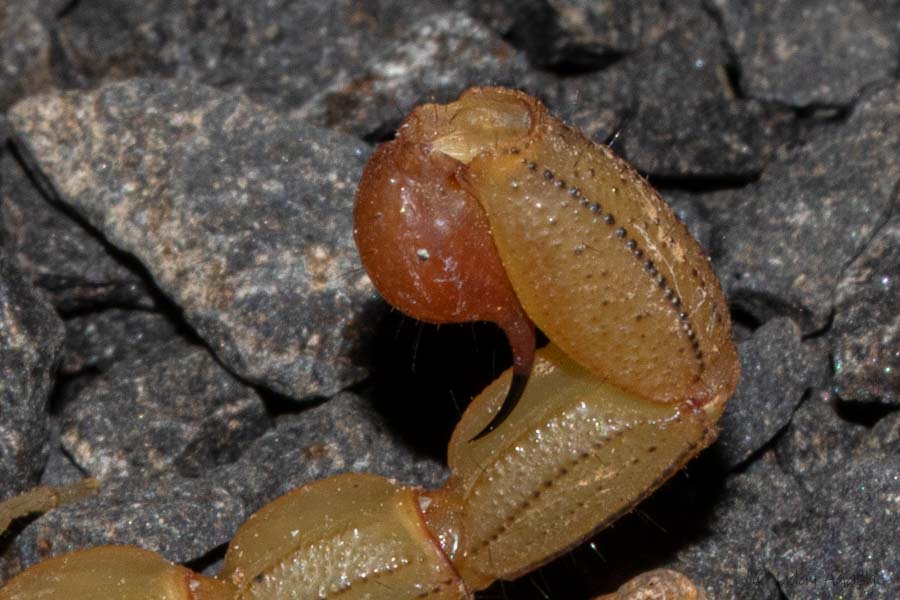
Sting Close-up
As we started on the night trail, within first 300 meters we could see the Indian Nightjar. We all slowly got down from the vehicle and took some records snaps. Gradually we approached the bird and finally managed to get some snaps from as close as 3-4 feet distance.
We then moved further on. Our main target was to see the Hedgehog but had no luck with it. Avinash was at his best, driving and searching simultaneously (steering wheel in one hand and the torch in the other). We covered lot of distance, but there wasn’t any sign of it. No luck with Hedgehog but we managed to see the Red Sand Boa that was on the tar road. Avinash was very very alert and he spotted it on the drive back. Once again, we got down and managed to capture the beautiful reptile.
On the way we also saw the “Dung Beetle”. Till now, I had only heard about it but it was right there in front of our eyes. The Dung beetle is famous for making balls out of the dung and then roll it all the way to its nest. A very efficient cleaner appointed by the nature, we could see it rolling the dung-ball swiftly. Every few seconds, it got down to check the surroundings and then back to its task of pushing the ball. It was expertly using its hind legs for that purpose.

Indian Nightjar
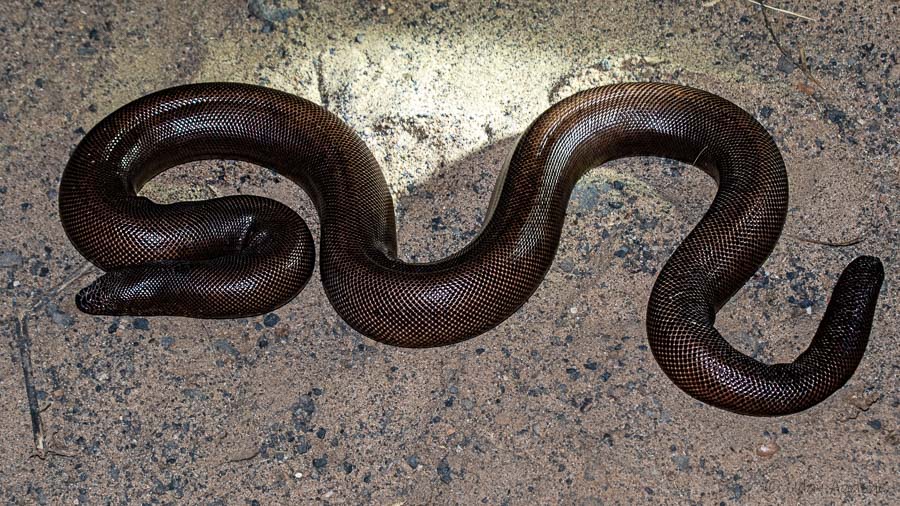
Red Sand-Boa

Dung Beetle
There were no more sightings that night and we got back to the rooms little after 11pm.
Day 3 (14-Sep-19)
We moved out at 6:30am as planned and today we planned to go towards the wetlands or the Banni Grasslands area for waders.
This was expected to be a typical desert sand but it was surprisingly a greener patch today. For us (first timers) it did not mean anything but people like Avinash/Clara who regularly visit this place, were surprised to see the greens. At many places there were small water bodys formed as well.
As we were passing thru the villages, we saw & clicked few birds without getting down from the vehicle.
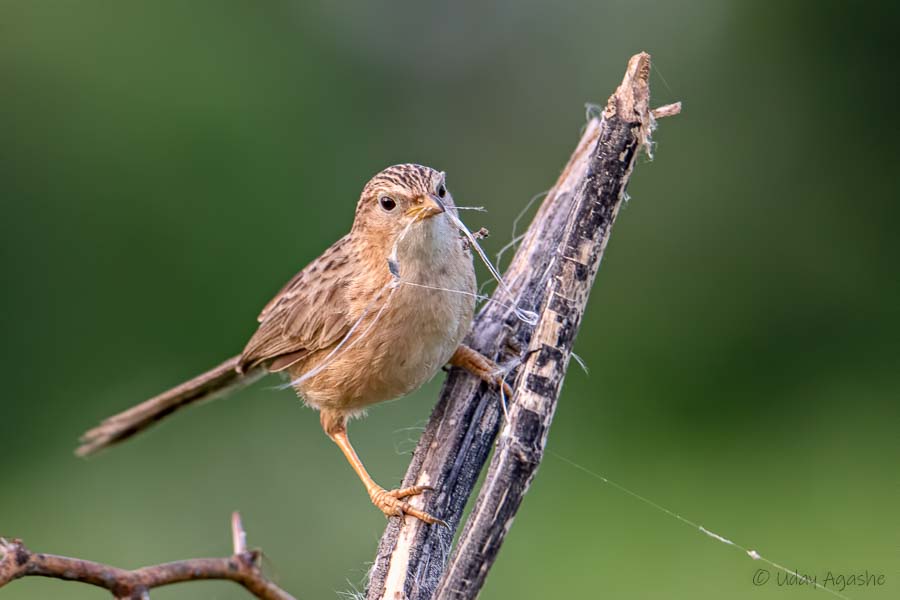
Common Babbler with Nesting Material
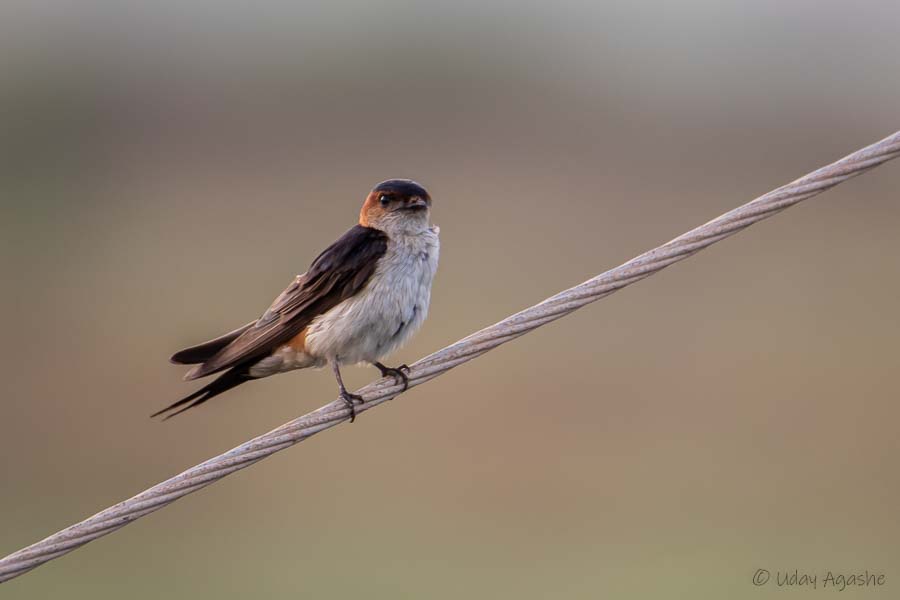
Red-rumped Swallow
As soon as we came across the wetlands, there were multiple waders on display. Primary among them were the “Green Sandpipers”, “Temminck’s Stints”, “Little Stints”, “common sandpipers”, and so on. Identifying waders is a very confusing task and I am absolutely poor at that. We were surprised at the ease with which Avinash & Clara were identifying them from long distance.
Little further we saw a grass patch and a nicely perched Isabelline Shrike on a grass stump.

Isabelline Shrike

Green Sandpiper
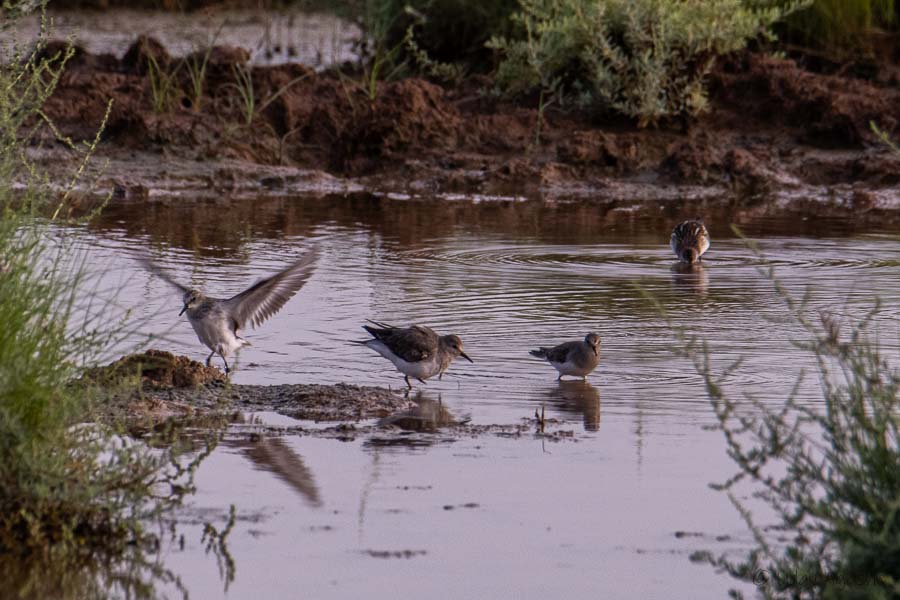
Temminck's Stints
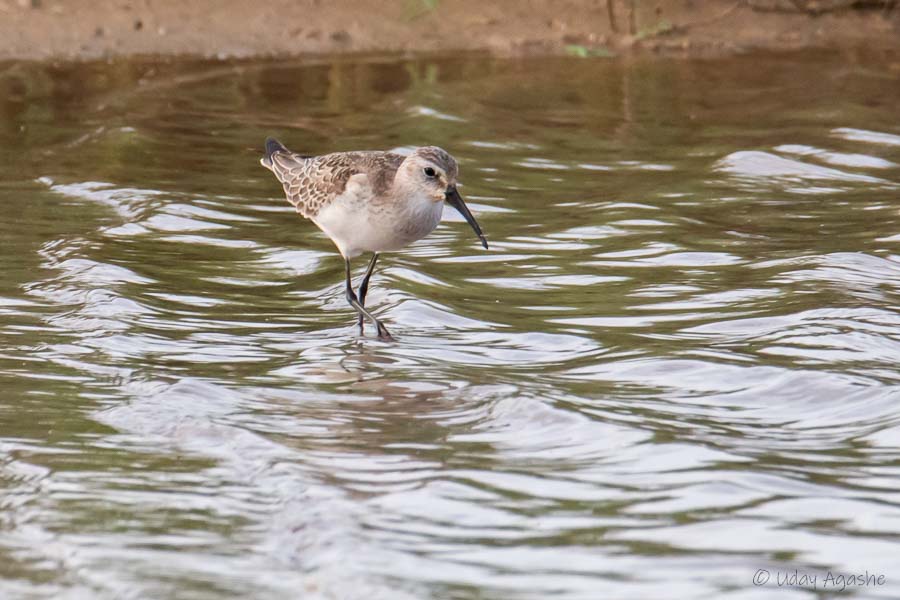
Curlew Sandpiper
While we were busy with the shrike, Avinash got a call from Bharat Bhai (he had gone with the other group that morning). Apparently, he had found the prized catch, “the European Nightjar”. Everyone got visibly excited hearing the news. We quickly u-turned our vehicles and sped up towards the area we had been the previous morning. On the way we came across a pair of “Montague’s Harriers”, but we didn’t wait long (just 1-2 quick snaps and we zoomed ahead).
Although the journey was less than half hour, it appeared very long for all of us. We were hoping/preying that the Nightjar remains on that spot and that we will be able to see /photograph it. As we reached the spot, Bharat bhai and team were having breakfast, and they asked us to do the same. Frankly no one wanted to have that delay but on a birding tour, the guides are always right (like the BOSS is always right!)! So, we all waited reluctantly.
After that quick breakfast, Bharat-bhai lead us to the exact location. He stopped us some 20 steps away and asked us to just wait there. The process from there-on could be termed as “Queued Darshan”!! He asked us to come strictly one at a time (so naturally we had to form a queue). Since I was ahead while walking, I was the first one to go (This was the only time, when I would have preferred to be little later in the queue.. because then I could have learnt about the exact condition of the spot and made the required camera setting adjustments), didn’t have much choice there. Went in quietly, set my eyes on the elusive bird and quickly took a few shots (that’s all was allowed). Bharat then asked to move back quickly and send the next person. One-by-one everyone was able to see it.
As people were going for the Darshan, we thought of standing once again in the queue and try to have a second round of photos. But when Avinash came back from his turn he denied us that chance. Apparently, the bird was getting disturbed. It could then have flown away and Bharat-bhai did not want that to happen (searching it again for next batches, would have been a big task for him).
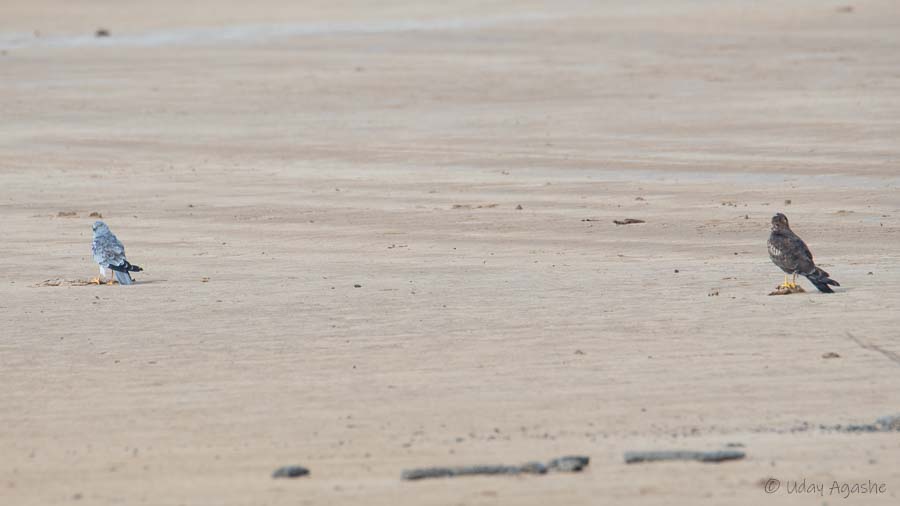
Montague's Harriers
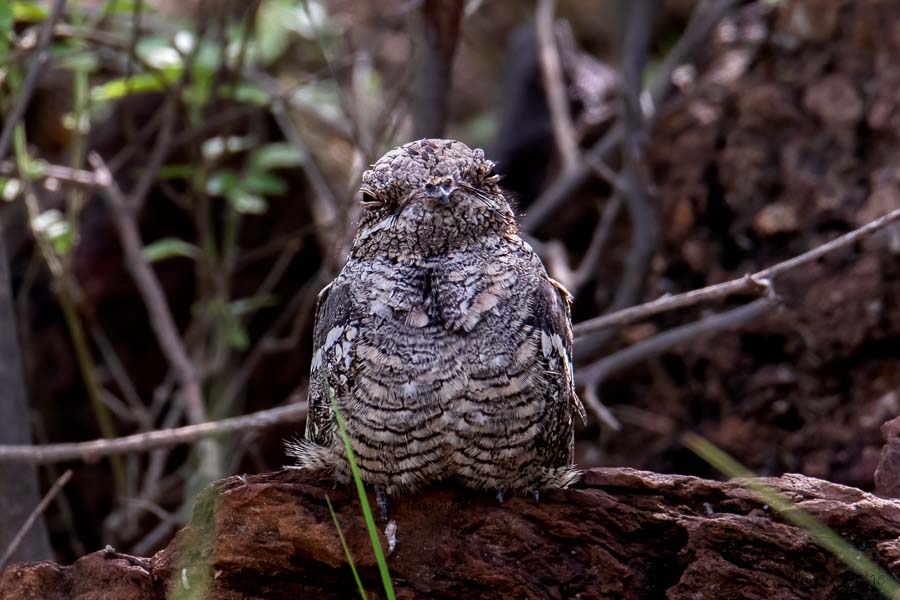
European Nightjar (PM)
On that happy note we decided to move back to our home-stay. On the way we saw one “European Roller” and an unfortunate road-kill of an “Indian Nightjar”.
That afternoon I once again had a chance of photographing the common birds at the feeder. Before that I could see a raptor right above our heads. It was a “Short-toed Snake Eagle”. This eagle has the ability to hover in the sky at one place for considerable amount of time. That allowed me a decent picture in that harsh afternoon light.
Today the sparrow mother wanted to feed protein-rich diet to the young ones. The chicks appeared to be very hungry as usual. This time, I decided to position myself on the ground allowing a different angle of view.
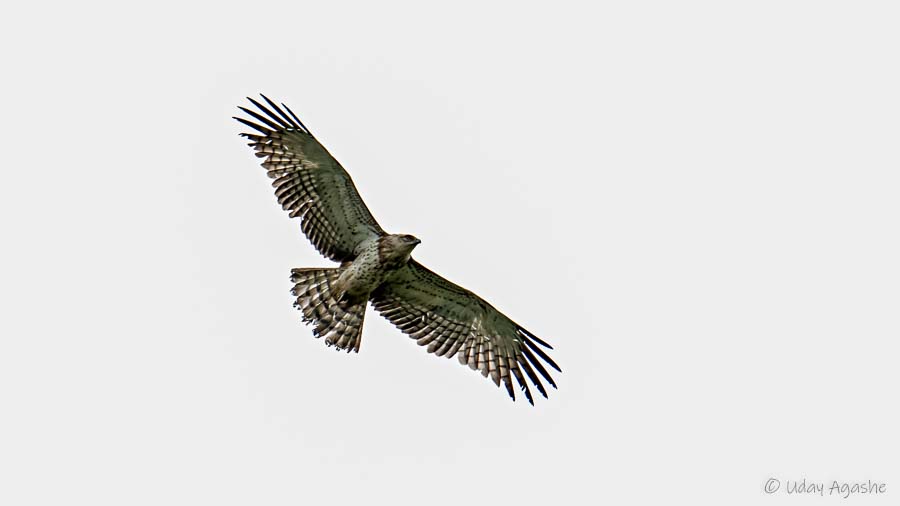
Short-toed Snake Eagle
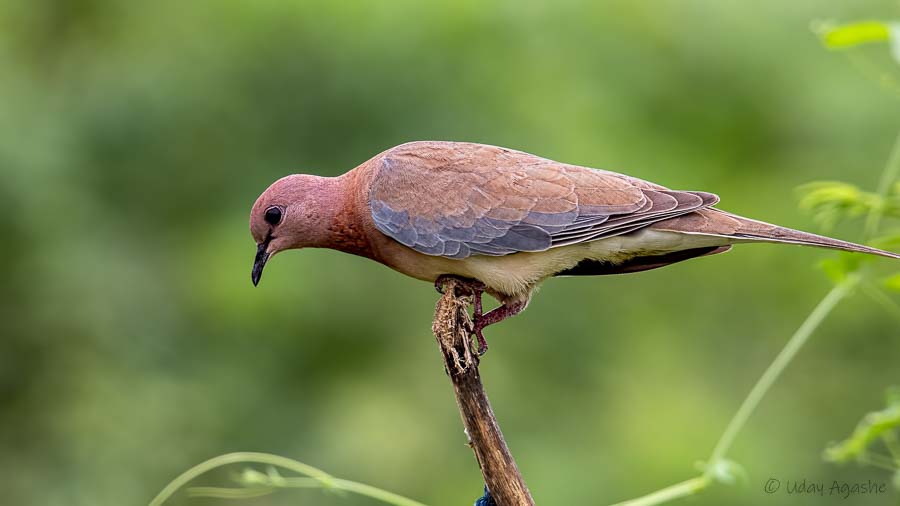
Laughing Dove
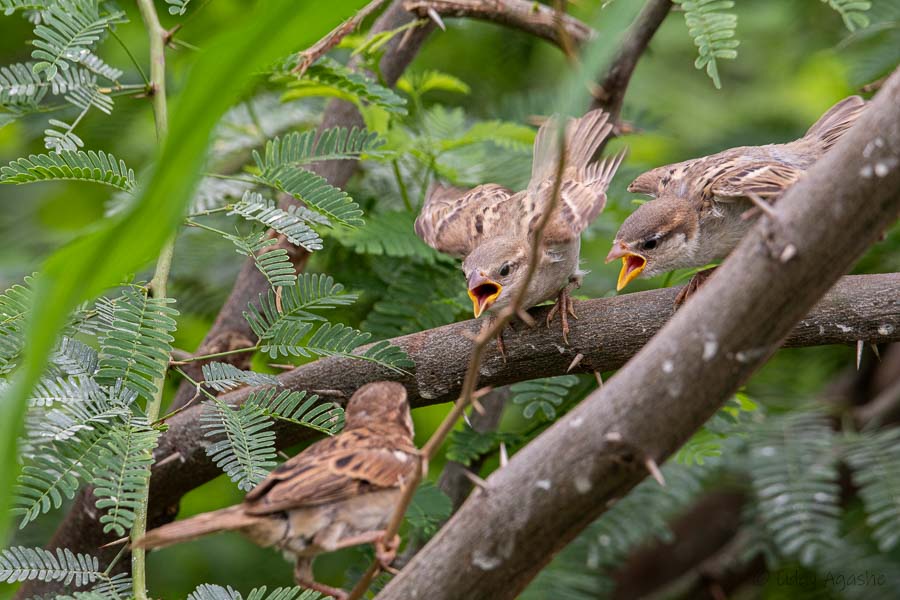
Chicks demanding food
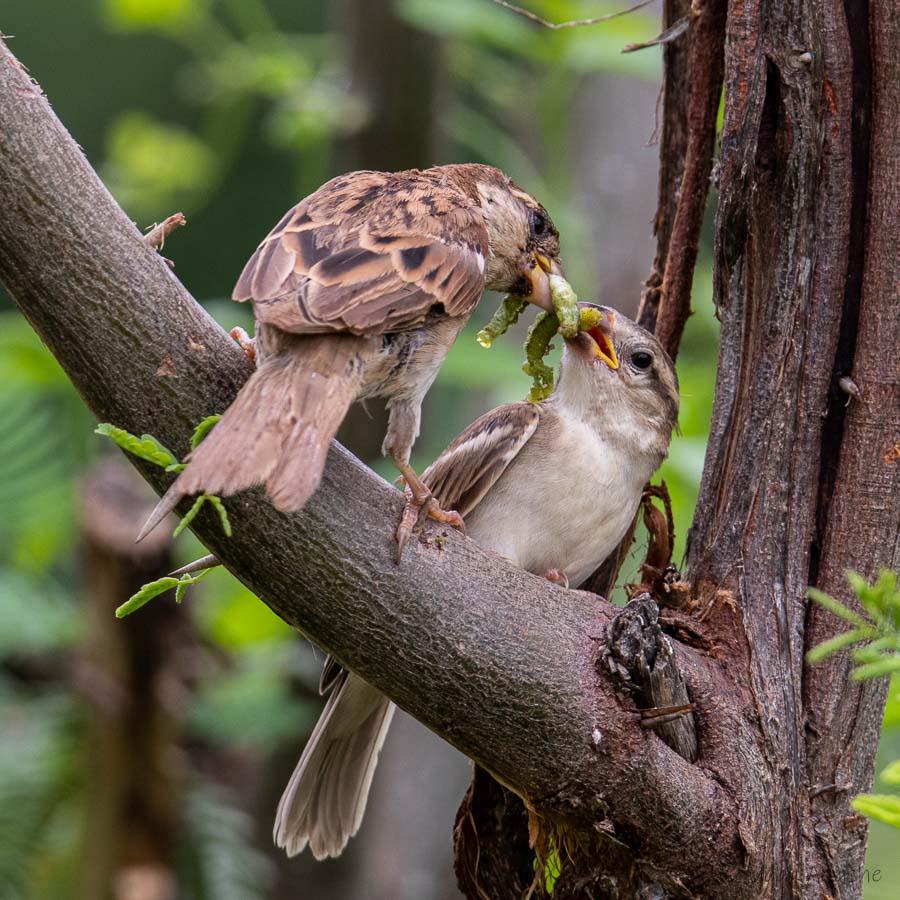
Feeding Protein-diet

Feeding Protein-diet
The afternoon safari was going to be our last chance as we had to catch the train in the night. Although we had covered all 8 species of passage-migrants that we wanted to see, our wish-list was never ending (good perch, good background, close proximity, etc, etc, etc,).
First on offer was the “Spotted Owlet”. Although not uncommon, it is always a pleasure to photograph this little beauty.
As we moved ahead, we came across the “Rufous-tailed Lark” and a bunch of “Indian Coursers”.
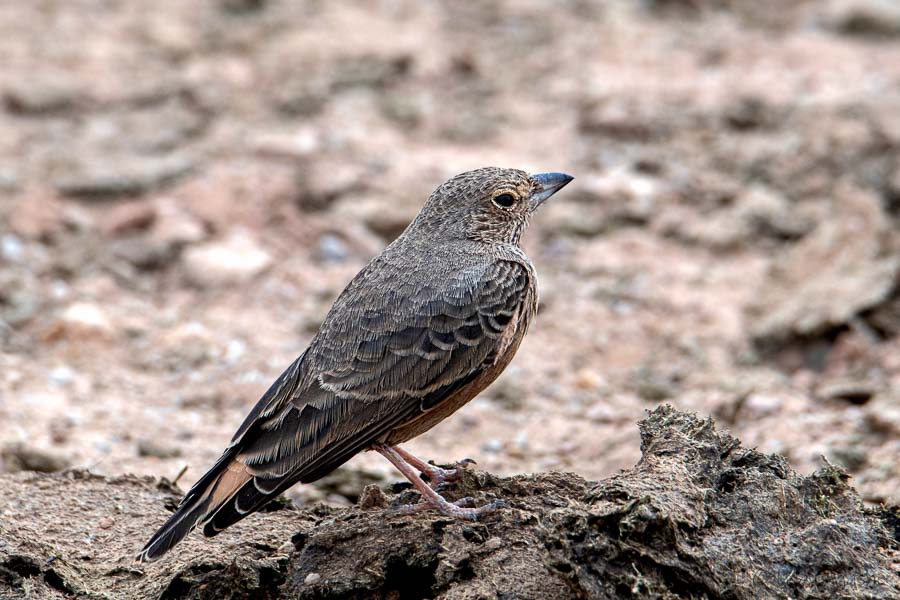
Rufous-tailed Lark

Spotted Owlet
We then moved further for another chance to see the Rufous-tailed Scrub Robin. For about 20 minutes Bharat-bhai & Clara were searching for it while we remained in the vehicles, even Avinash remained inside. After sometime he probably got bored and decided to move out, as soon as stepped in the field, immediately he got one Robin (he seems to be a bird-magnet somehow!!). Everyone rushed to the spot with cameras. We kept seeing it for next15-20 minutes at different perches, constantly on move. We did get some good photos but Avinash got the best (he got the bird with a berry like fruit in its mouth).

Rufous-tailed Scrub Robin

Avinash showing the bird
It was already getting late, so we decided to stop there. For snacks, we had the special “Kachhi Dabeli” with tea. We returned back to the homestay by 6:30 and were to be ready (with bags packed) at7:30 for dinner. Our train was at 10:25pm and considering the 1hour+ travel time, we started by 8:30pm.
We all had lots of happy memories of the tour as well as the place.

Epicenter Homestay
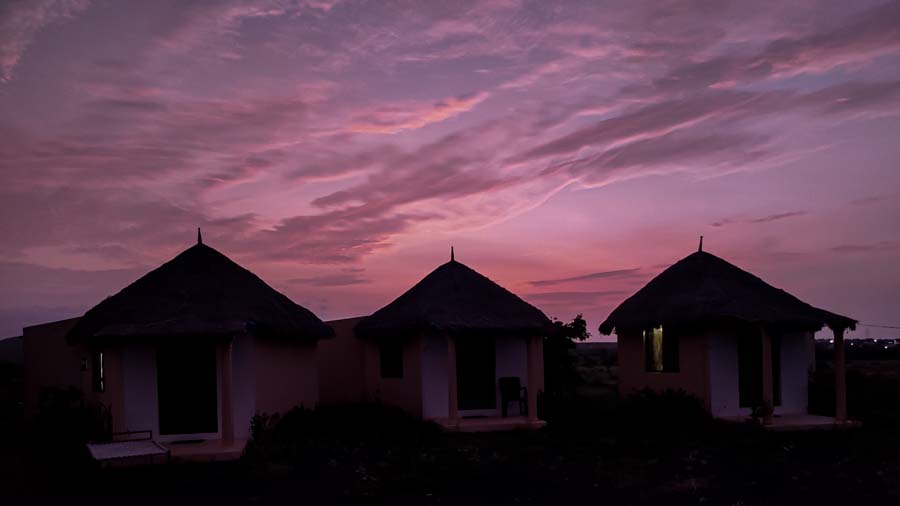
Epicenter Homestay
I will be more than happy to answer any query about this tour. You can either put a comment down here or write to me on “uday.agashe@gmail.com”.